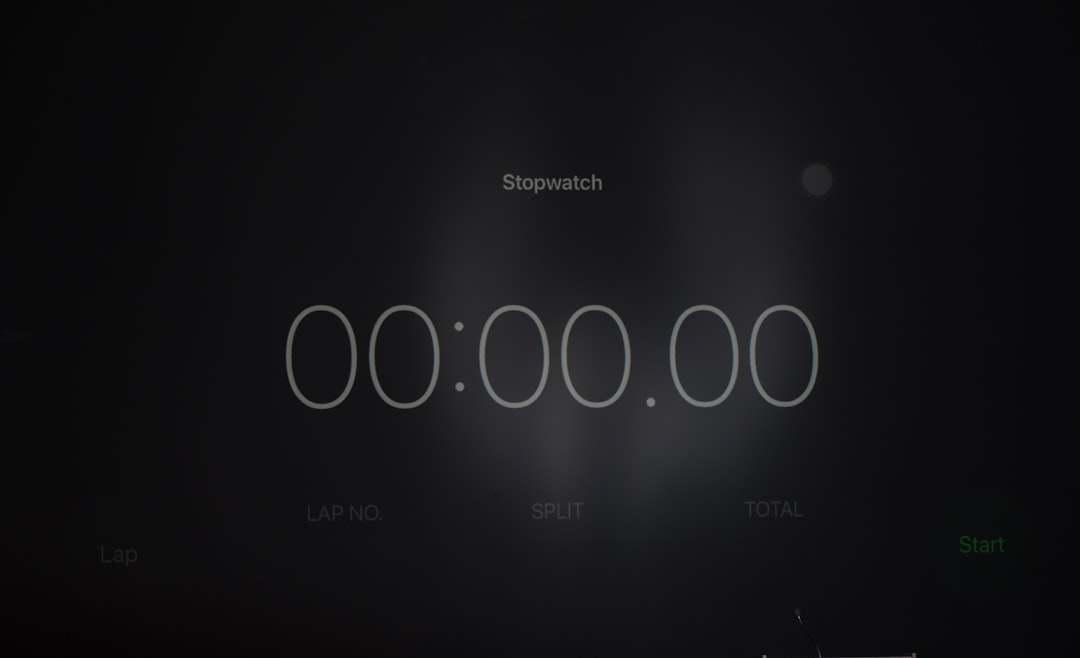In an increasingly digital legal landscape, legal practice management tools are essential for law firms to maintain efficiency and ensure proper billing. CosmoLex, a cloud-based legal practice management software, is one of the forerunners offering an all-in-one solution with integrated time tracking, billing, accounting, and compliance functionalities. Recently, some users reported an alarming issue: their timers — more specifically, the background timers — had stopped logging time accurately. This glitch raised important questions among solo and firm-based practitioners who rely heavily on automated time tracking for accurate billing and productivity reporting.
TLDR:
CosmoLex users recently encountered a problem where background timers stopped functioning as expected, leading to lost or inaccurate activity logging. After careful investigation, the issue was traced back to a disruption in the Sync Service that powers the background processes. A server-level synchronization error caused background timers to fail silently without notifying users. Restarting the affected Sync Service node resolved the problem for the majority of users.
What Are CosmoLex Timers?
CosmoLex offers built-in timers that help law professionals track billable hours. These timers run on various interfaces — from desktop to mobile — and include foreground timers (manually controlled) and background timers (automated tracking in the background while users handle tasks).
The primary advantage of background timers is that they’re designed to log time automatically while you focus on your casework, emails, document reviews, and court preparations. It’s a vital tool for any professional trying to stay on top of rigorous billing requirements.
The Problem: Silent Failure of Background Timers
Several CosmoLex users began noticing missing entries in their billing logs or incorrect total hours billed despite lengthy work sessions. Upon further inspection, it became evident that only background timers were affected. Tasks that should have been passively tracked were completely omitted. Manual timers continued to function as expected, which narrowed the problem down to an automated subsystem.
This led firms to dig deeper into whether it was a user error, browser issue, or something more systemic. As more firms reported the problem, CosmoLex’s support team began its investigation.
Root Cause: A Glitch in the Sync Service
After reviewing countless logs and configurations, engineers at CosmoLex zeroed in on the company’s proprietary Sync Service. This background process ensures that time entries, document syncing, and other passive data collection mechanisms work seamlessly and in real-time.
The Sync Service had encountered a failure in one of its microservice nodes responsible for real-time event execution. Essentially, the engine that tracked time passively had crashed silently on specific servers. This localized error didn’t bring down the whole system, but it prevented background timers from functioning correctly for a subset of users.

What made the issue more complex was its unpredictable nature. The failure wasn’t immediate and happened progressively based on individual user sessions and their interactions with the Sync Service node. Because it happened in the background, there were no obvious alerts until billing discrepancies became apparent.
The Fix: Restarting the Sync Service Node
Once identified, the CosmoLex technical team executed a soft restart of the affected Sync Service microservice. This action essentially reinitialized the timer engine across all environments where failures were detected, allowing real-time synchronization to resume without data loss.
The effects were almost immediate. Users noticed their background timers functioning as intended, and newly logged time entries began populating their dashboards. In some cases, previously unlogged time was restored depending on cache availability, further minimizing damage.
In addition to the fix, CosmoLex deployed a hot patch that adds an alert system for future Sync Service crashes. This ensures that users will receive a prompt notification if a Sync Service instance behaves abnormally.
Lessons Learned and Future Precautions
This incident highlighted the importance of high-availability back-end structures and proactive alert mechanisms. Time tracking, especially for legal professionals, isn’t just a matter of convenience — it’s a regulatory necessity.
CosmoLex has pledged to invest in better self-healing architecture and more robust monitoring tools to ensure its time-tracking engine remains highly reliable. Users are also encouraged to occasionally verify automatically logged time and report anomalies early.
Best Practices Moving Forward:
- Monitor Daily Time Logs: Make it a habit to review your time entries at the end of each day.
- Enable Notifications: Opt into CosmoLex alerts and periodic summaries.
- Update Your App: Ensure you’re using the latest version where hotfixes and patches are implemented.
- Contact Support Early: If you suspect a glitch, raising a support ticket promptly can help you and others get resolution faster.
Impact on Users
Some small firms and solo practitioners reported up to 15% unlogged time during the period when background timers malfunctioned. Since CosmoLex operates on the cloud with automatic backups, many recovered their missing hours via restored session logs or manual estimation. However, accurate timekeeping is integral to billing ethics, especially when dealing with court-appointed work or trust-account-related billing.
CosmoLex’s proactive communication following the fix was commended by many. An email bulletin detailed the issue, the fix, and the safeguards being implemented — fostering transparency with end users.
FAQ
1. How long were the background timers non-functional?
The issue persisted for approximately 36 to 72 hours depending on the server involved. Not all users were affected.
2. What caused the failure in the Sync Service?
A failure in one of the microservices responsible for real-time logging created an interruption in the background timers’ operation. The failure was silent and therefore not detected immediately.
3. Were any data logs lost permanently?
In most cases, data was recoverable from cache or redundant logs. Extremely short or poorly timestamped sessions may have been lost, but this was rare.
4. Has the issue been fully resolved?
Yes. CosmoLex executed a hotfix and a system-wide Sync Service restart. They also implemented alerts and a monitoring tool for ongoing checks.
5. How can users prevent similar problems in the future?
While end-users can’t control server-side issues, they can stay updated with app versions, enable all notifications, and perform daily reviews of time entries to catch discrepancies early.
6. Will CosmoLex be compensating users?
No blanket compensation was announced. However, users with demonstrable significant loss were encouraged to contact support for case-by-case evaluations.
7. Can I switch back to only manual timers?
Yes, users who prefer more control over their billing can stick to manual timers. However, this limits convenience and may reduce efficiency for many workflows.
In Conclusion
While the background timer glitch in CosmoLex was a hiccup in an otherwise reliable system, it served as a critical reminder of the importance of resilient backend systems. Whether you’re tracking hours for a single client or managing an entire caseload, time is quite literally money in the legal profession. Thankfully, CosmoLex’s fast response and system fix helped restore trust and reestablished normal operations with minimal disruption.
